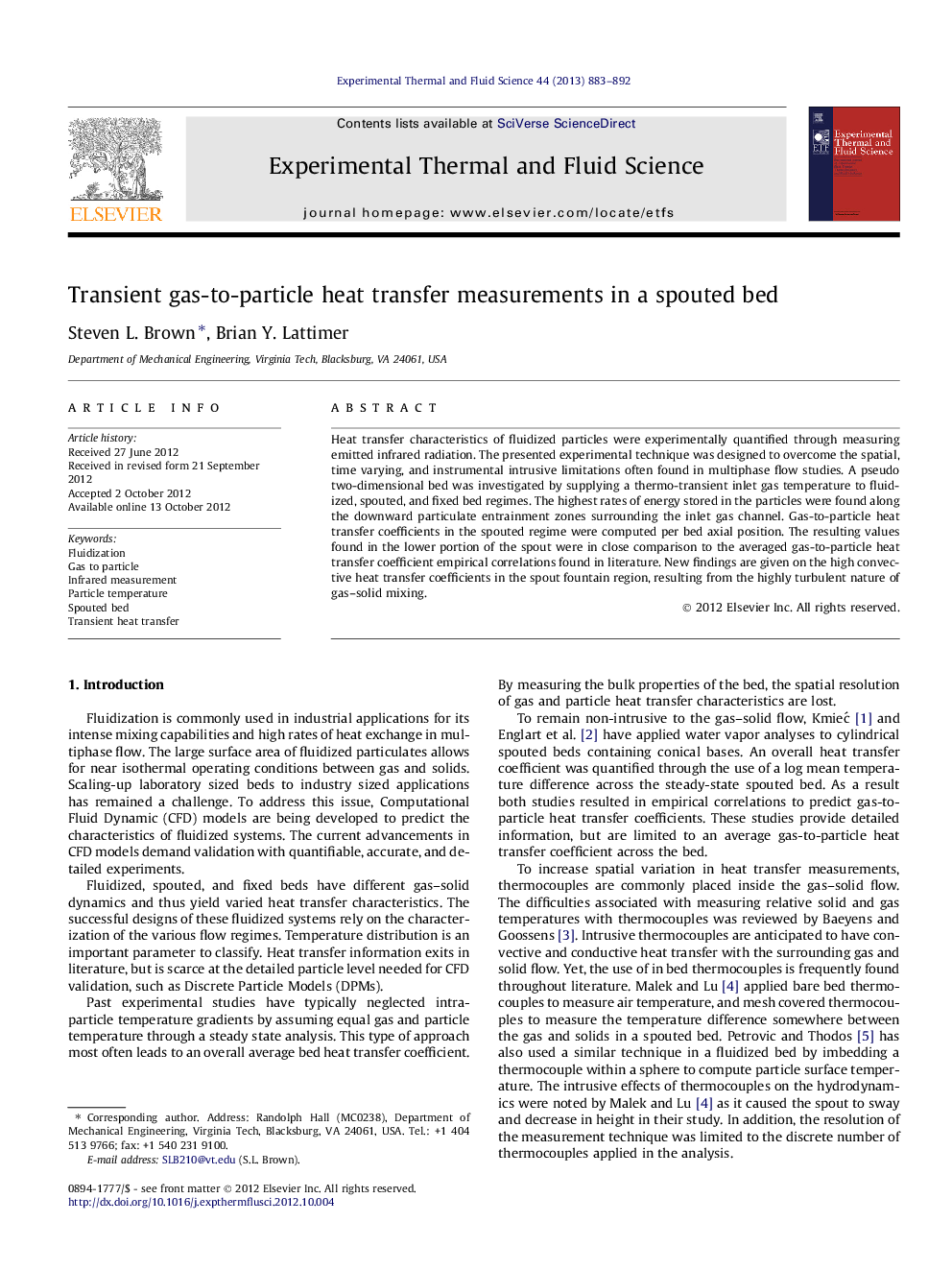| Article ID | Journal | Published Year | Pages | File Type |
|---|---|---|---|---|
| 651579 | Experimental Thermal and Fluid Science | 2013 | 10 Pages |
Heat transfer characteristics of fluidized particles were experimentally quantified through measuring emitted infrared radiation. The presented experimental technique was designed to overcome the spatial, time varying, and instrumental intrusive limitations often found in multiphase flow studies. A pseudo two-dimensional bed was investigated by supplying a thermo-transient inlet gas temperature to fluidized, spouted, and fixed bed regimes. The highest rates of energy stored in the particles were found along the downward particulate entrainment zones surrounding the inlet gas channel. Gas-to-particle heat transfer coefficients in the spouted regime were computed per bed axial position. The resulting values found in the lower portion of the spout were in close comparison to the averaged gas-to-particle heat transfer coefficient empirical correlations found in literature. New findings are given on the high convective heat transfer coefficients in the spout fountain region, resulting from the highly turbulent nature of gas–solid mixing.
► Non-intrusive infrared thermography captured time dependent particle temperatures. ► Largest rates of energy stored in the spouted bed are located in the annulus. ► Gas temperature closely follows the temperature of the solid particulates. ► Highest gas-to-particle heat transfer coefficients are found in the spout fountain.
